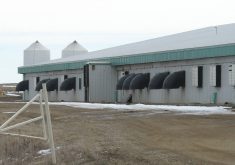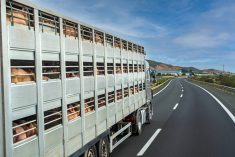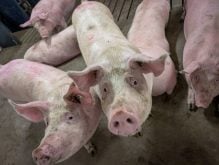The U.S. Agriculture Department is known for its army of statisticians packing yardsticks and calculators to measure wheat and count soybeans.
But the agency needs more firepower for another kind of rural reckoning and is gearing up with thermal imaging weapons.
In its crosshairs are aggressive feral hogs that can weigh more than 400 lbs. (180 kg) and have been known to carry off newborn calves. They cause about $1.5 billion of damage every year to farm communities and fields, say department officials, and now there are worries they may help spread a deadly pig virus.
Read Also

Seeding Indigenous agricultural prosperity
National Circle for Indigenous Agriculture and Food says Indigenous agricultural success needs strong relationships.
So the USDA wants to buy thermal scopes that snap onto high-powered rifles to kill the wild beasts.
“We’re going to get them, oh yes we are,” said Jason Wilking with USDA’s Animal and Plant Health Inspection Service (APHIS), which has put out bids for 11 scopes since April 7.
The thermal scopes are part of a $20-million nationwide project to combat the feral swine, which have gobbled down apples in New York state, cleaned out cornfields in North Carolina, and even devoured bovine calves in Mississippi.
- More from the Manitoba Co-operator: Serious wild boar infestation in Saskatchewan
USDA scientists now have concerns the hogs may play a part in spreading porcine epidemic diarrhea virus (PEDv). While not a danger to humans, the disease has killed seven million piglets. But no evidence has yet been found linking feral swine to the lethal pig disease.
The project will also test for the spread of diseases such as swine influenza, swine brucellosis and trichinosis, one of the bacteria that feral swine have been found to carry that can threaten human health.
The animals, thought to have been introduced to the United States centuries ago by early Spanish explorers, have migrated west to California and north to Wisconsin from Texas and southern states, where they plagued farmers for decades. They’re closely related to the Eurasian wild boar, say scientists, and the two have been known to interbreed.
Feral hogs travel in herds, breed quickly and are good at adapting to their environment. Bruce Leopold, executive director of the Center for Resolving Human-Wildlife Conflicts at Mississippi State University, said they have even learned to become nocturnal after one of their group has been shot by a hunter.
The thermal scopes, priced around $12,000 apiece on eBay, will allow APHIS to make nighttime attacks and help “lethally remove” the swine, USDA APHIS spokeswoman Carol Bannerman said. Hand held, the expensive devices can be used to search for darkened areas that indicate the location of animals, or they can be attached to weapons, sniper-style.
The USDA has various means to zoom in on herds, including “Judas Pig,” a technique in which feral sows with radio transmitter collars are released back to their wild herds.
Another tactic under consideration: drones.
“We could use the drones to photograph areas with infrared film that can pick up signatures of pigs on the ground,” Leopold said. “It’d be cheaper than using aircraft.”
There is no word yet on whether the drones will join the hunt.















